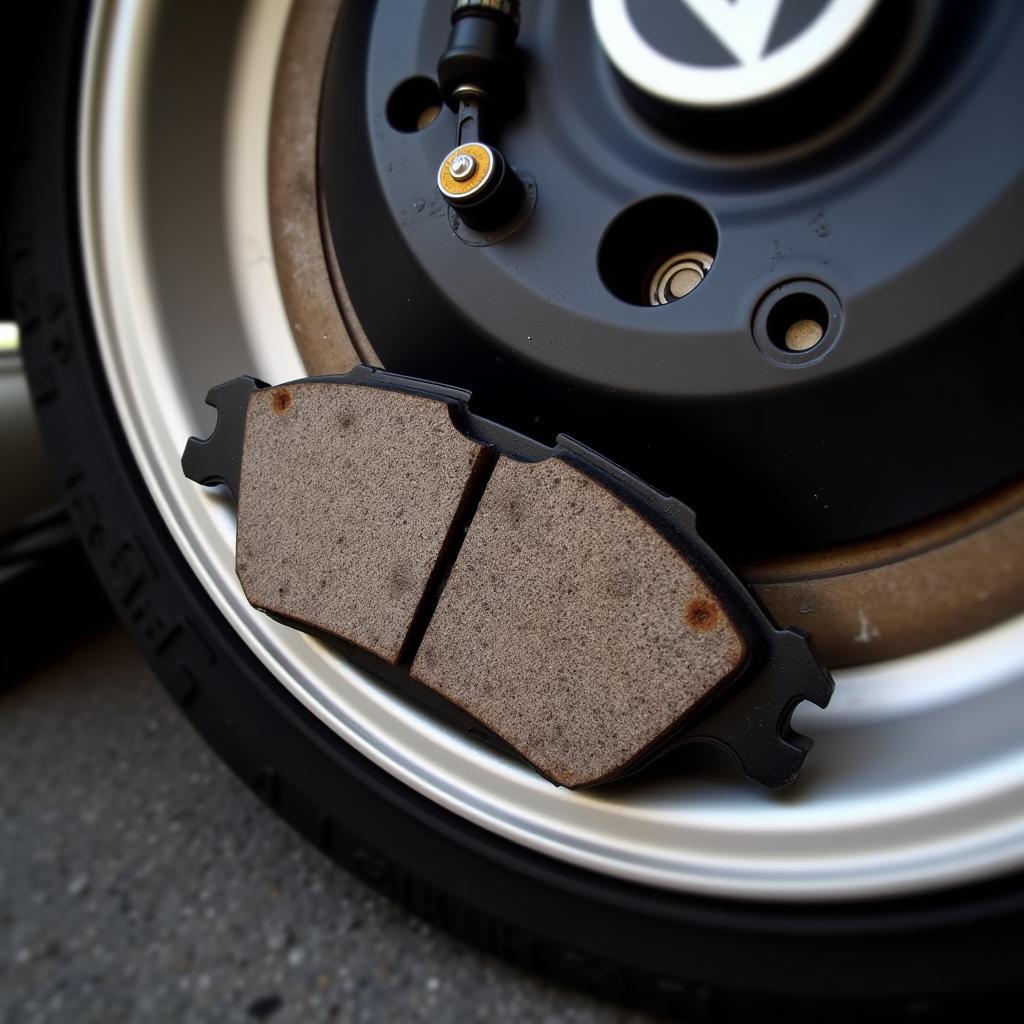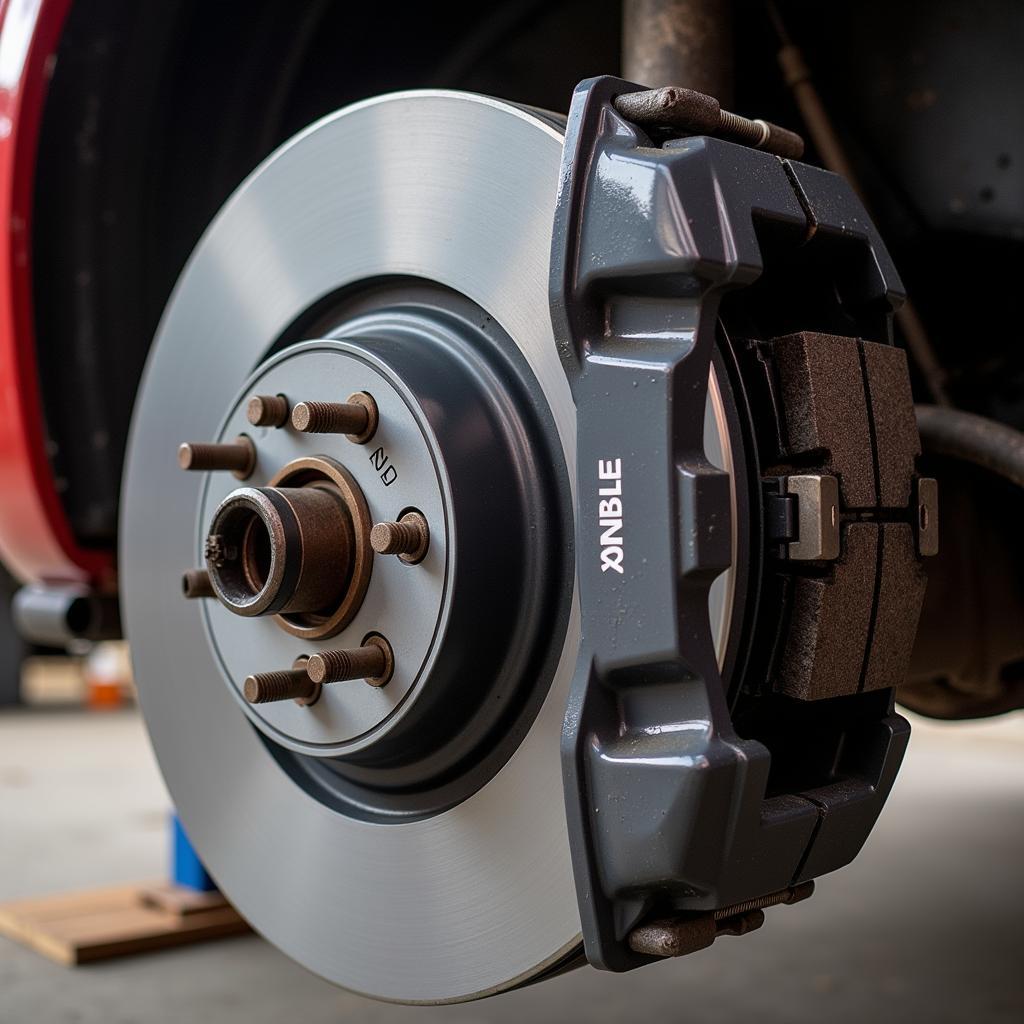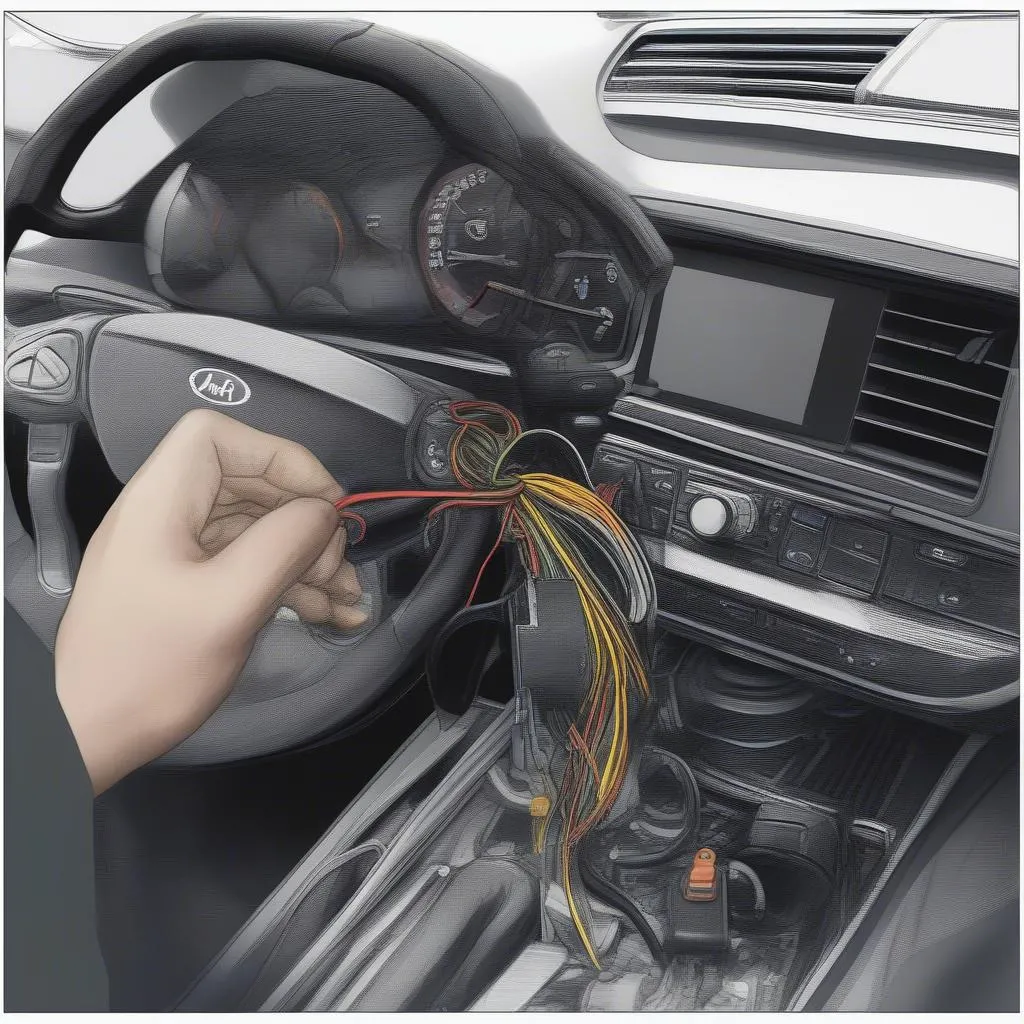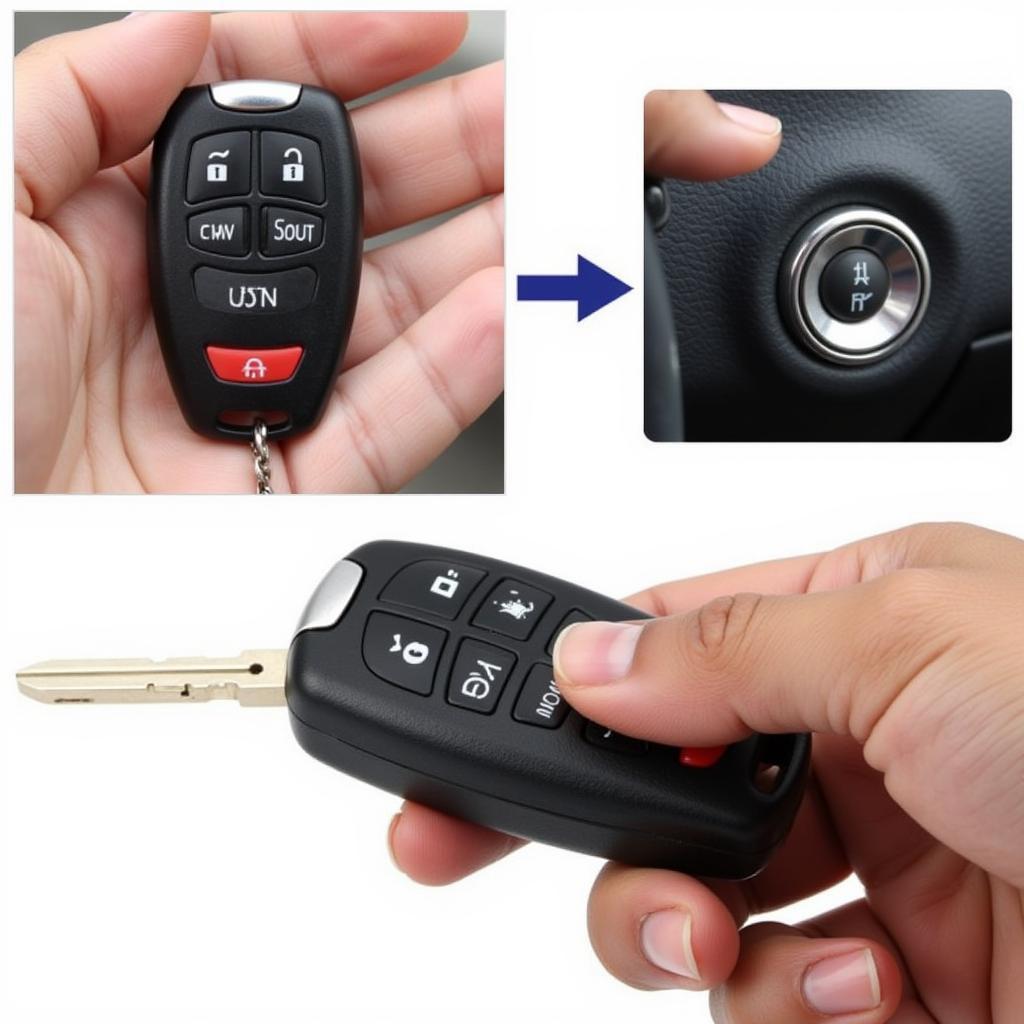The dreaded vw t5 brake pad warning light can be a source of anxiety for any driver. Understanding its causes and knowing how to address the issue is crucial for maintaining your vehicle’s safety and performance. This guide delves into the intricacies of the vw t5 brake pad warning light, offering practical solutions and expert insights to help you navigate this common automotive concern.
After the initial anxiety subsides, the next logical step is to figure out why the warning light has illuminated. Is it a simple fix or something more serious? Let’s explore the various possibilities.
Understanding Your VW T5 Brake Pad Warning Light
The brake pad warning light on your VW T5 is part of a sophisticated system designed to alert you when your brake pads are wearing thin. Ignoring this warning can lead to costly repairs and compromise your safety. For more information about this specific warning light, you can visit vw t5 brake pad warning light.
This warning system relies on sensors embedded within the brake pads themselves. These sensors are strategically placed to detect when the pad material has worn down to a critical level. When this happens, the sensor triggers the warning light on your dashboard.
Common Causes of the VW T5 Brake Pad Warning Light
While worn brake pads are the most common culprit, other factors can trigger the vw t5 brake pad warning light. These include:
- Faulty brake pad wear sensors: Sometimes, the sensors themselves can malfunction, triggering the warning light even if your brake pads are still in good condition.
- Damaged wiring: Wiring issues can disrupt the communication between the sensors and the warning light, leading to false alarms.
- Low brake fluid: Low brake fluid can also trigger the warning light, as it indicates a potential problem within the braking system. This warrants immediate attention. Check out more on the general VW brake warning light at vw t5 brake warning light.
Diagnosing the Problem
Diagnosing the cause of the vw t5 brake pad warning light often involves a visual inspection of the brake pads and sensors. If the pads are visibly worn, replacement is necessary. If the pads appear to have sufficient material remaining, the sensors or wiring may be the issue. You can also learn more about resetting the warning light at vw t5 brake pad warning light reset.
Checking Your Brake Pads
To check your brake pads, you’ll need to remove the wheel to gain access to the brake caliper. Look for a small wire protruding from the brake pad. This is the wear sensor. If the pad material is nearly flush with the sensor, it’s time for new pads.
 Worn VW T5 Brake Pads
Worn VW T5 Brake Pads
Replacing Your VW T5 Brake Pads
Replacing brake pads is a relatively straightforward task, but if you’re not comfortable working on your brakes, it’s best to take your vehicle to a qualified mechanic. More general information about resetting VW brake pad warning lights can be found at vw brake pad warning light reset.
What You’ll Need
- New brake pads
- Brake caliper grease
- Basic hand tools
Step-by-Step Guide
- Loosen the lug nuts on the wheel.
- Jack up the vehicle and secure it with jack stands.
- Remove the wheel.
- Remove the brake caliper.
- Install the new brake pads.
- Reinstall the brake caliper.
- Reinstall the wheel and tighten the lug nuts.
- Lower the vehicle.
Preventing Future Issues
Regular brake inspections are crucial for preventing future issues and ensuring optimal braking performance. “Preventative maintenance is key to avoiding costly repairs down the road,” says automotive expert, John Miller, ASE Certified Master Technician. “Regularly checking your brake pads and fluid levels can help prevent unexpected issues and ensure your safety on the road.”
 New VW T5 Brake Pads Installed
New VW T5 Brake Pads Installed
“Another important aspect to consider is the quality of the brake pads you choose,” adds Miller. “Investing in high-quality brake pads will ensure longer life and better performance.” It’s also worth checking out information on the general VW red brake warning light at vw red brake warning light. This will provide further understanding of your braking system.
Conclusion
The vw t5 brake pad warning light serves a vital purpose in alerting you to potential brake issues. Understanding its function, diagnosing the problem, and taking appropriate action will keep your VW T5 running smoothly and ensure your safety on the road. Regular maintenance and proactive inspections are your best defense against costly repairs and unexpected breakdowns.
FAQ
- How often should I check my brake pads? Every 10,000-12,000 miles or as recommended in your owner’s manual.
- Can I drive with the brake pad warning light on? It’s not recommended. Driving with worn brake pads can damage your rotors and compromise your safety.
- How much does it cost to replace brake pads on a VW T5? The cost varies depending on the type of brake pads and labor costs.
- What are the symptoms of worn brake pads? Squealing or grinding noises, a spongy brake pedal, and reduced braking performance.
- Can I replace my brake pads myself? Yes, but if you’re not comfortable working on your brakes, it’s best to take your vehicle to a qualified mechanic.
- What happens if I ignore the brake pad warning light? You risk damaging your rotors and significantly compromising your braking ability, which can be dangerous.
- How long do brake pads typically last? Brake pad lifespan varies depending on driving habits and conditions, typically lasting between 25,000 and 70,000 miles.


